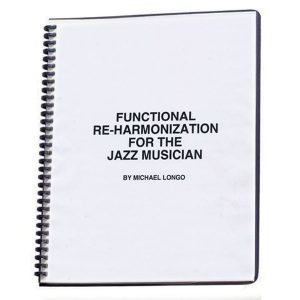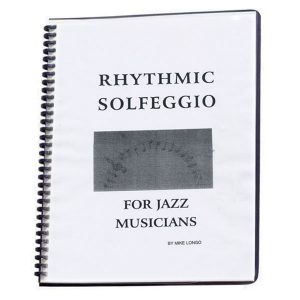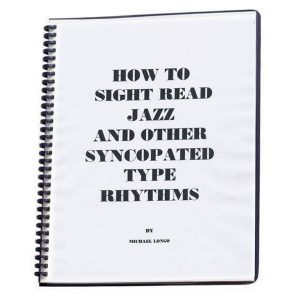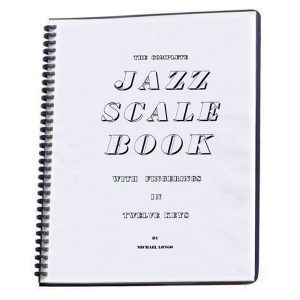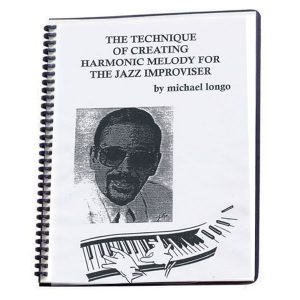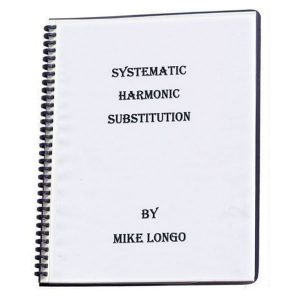Woodshed
Home Study Courses
The Improvised Melodic Line
$27.97
At Last…A Course of Study Has Been Devised Which Actually Teaches You the Skill of Spontaneously Creating Melody in a Manner Which Leads to a Professional Level of Ability.Learn the difference between rhythm as it developed in Africa and the Eastern part of the world, as opposed to our Western concept of rhythm.
“The Improvised Melodic Line”
Having the right piece of information about a particular aspect of playing can be of tremendous value to the budding professional. It can literally save you years of trial and error-type experimentation. Why is having the right information so important? Imagine, if you will, the following situation:
Young “Johnny pretty notes” is a trumpet player who has a gift for jazz but is unable to read music well. He is presently employed but is leading a life of hardship. He is working in a bar located in the rough section of his town. The band plays four shows a night backing up strip tease acts. Johnny is glad he has a gig but as an aspiring jazz artist, he is very unhappy in this situation.
One night after the last show, Johnny is approached by a man named “Joe Flyspots” who introduces himself as a fellow trumpet player. Joe is impressed by Johnny’s”pretty notes” and tells him so, but wonders why he is working in “this place.” The two of them become friends and eventually Johnny tells Joe about his inadequacy at reading music. “Is that the problem?”, his friend asks, “Well the next time you practice, try thinking about it this way…”
Johnny, excited by what his friend has told him, rushes home to try what he has just learned. To his delight, he discovers that his friend has given him a valuable piece of information, unlocking his insight into the correct approach for developing his skills the quickest and easiest way. In a few months Johnny’s reading ability has improved remarkably to the extent that his friend Joe responds by asking him to replace him as a substitute for a week on his gig. Johnny is delighted and accepts, only to discover that his friend works at one of the better theater restaurants in the nicest section of the city. He further discovers that his friend also plays in a band in which all of the musicians play “pretty notes.”
At the end of the week, to his delight, he discovers that he has been paid twice the amount he was earning on his other gig. When Johnny returns to his old gig the following week, he becomes very depressed, but at last! — Two weeks later he receives a phone call from his friend Joe who informs that a spot has become vacant for a trumpet player where he works and that the leader, who was impressed by Johnny’s “pretty notes” and reading ability, has decided to hire him. A year later, John is living in a new part of town. He is relaxed and happy. His rent is paid. He is very thankful for the valuable information that his friend Joe shared with him because it had the power to literally transform his life.
It is this type of information we are presenting once again in this provocative new course by Michael Longo. You receive the kind of knowledge and information that is not available in schools, and can only come from the accomplished professional.
YOU LEARN: How to use rhythm as a source of melody; How to create melody from a single tone; How to weave lines in and out of chord voicings and the tones involved in a chord progression; How to construct runs to be used as tools to create spontaneous melody; How to use the entire chromatic universe through the use of modes and by employing non-harmonic tone technique; How to negotiate progressions like the II-V pattern spontaneously rather than rely on memorized patterns.
Not only are you provided with valuable information, but you are shown how to practice to produce results the very next time you perform. In this course the work is mapped out in such a way so as to foster the tendency of creating an original style for yourself. You actually learn the techniques and practice methods of the accomplished musician, enabling you to experience an almost immediate growth as you begin to incorporate them into your playing.
You will learn how to use a single line of melody to convey the harmony, rhythm, counterpoint and form of an entire piece of music, unaccompanied. You are provided with exercises which act as catalysts for unlocking certain kinds of rhythmic and tonal behavior in your playing as if by magic.

